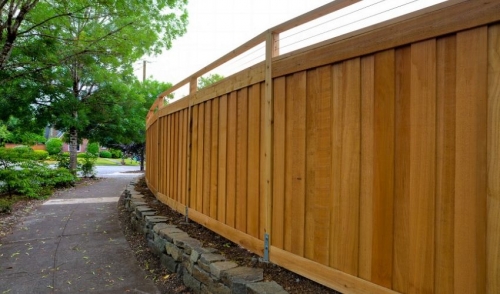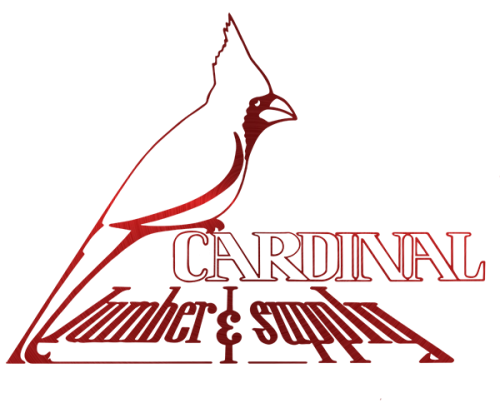
Factors to Consider Before Building a Fence
It’s true that good fences make good neighbors, but how can you put up a good fence to be a good neighbor? Understanding the basics and making the best choices for your needs and your yard can help you build a fantastic, friendly fence.
Why Do You Need a Fence?
There are many reasons why a fence can be beneficial for your yard, landscape, and property. Top reasons many homeowners put up fences include:
- Privacy: A solid fence, or even one with some decorative latticework or open design, can provide privacy on small lots when neighbors may be in close quarters.
- Security: A good fence can improve your home security by providing a deterrent against potential threats, including burglars, trespassers, and unwanted wildlife.
- Boundaries: A simple fence can serve as a reminder about property boundaries, particularly where lots may be large or unusually shaped.
- Noise: Thicker or taller fences can help muffle noises from adjacent lots and nearby streets, improving the peace and quiet of your home.
- Pets: A sturdy fence is essential to keep pets safely in their own yards so they do not get lost and are not at risk from vehicle collisions or other neighborhood threats.
- Children: Family-friendly fences keep children in safe spaces, and can likewise be a reminder for children to stay out of a garden or other adults-only area in the yard.
- Concealment: Fences can be used to conceal unsightly areas, such as a compost pile, air conditioning unit, storage space, or other less visually appealing spaces.
- Curb Appeal: A well-maintained fence can instantly improve a home’s curb appeal and foster pride of ownership.
Most homeowners have more than one reason for installing a fence. Understanding your unique combination of needs about why you want a fence can help you choose just the right style to satisfy those needs.
Types of Fences
There are many different fencing options to choose from, and each has pros and cons that you should consider before settling on one particular style.
- Wood Fences: Wood is a more sustainable, less expensive material, and wood fences can be designed in many ways, from panels to pickets to lattices to rails. Wood is versatile and easy to work with, but can also warp over time in harsher climates.
- Vinyl Fences: Vinyl is durable and lightweight, but can be difficult to replace if damaged. It is available in a wide range of colors and styles, but may need periodic cleaning to keep its best color and condition.
- Chain Link Fences: Chain link is less expensive and durable, but does not offer as much privacy as solid fences. Industrious pets or children may easily climb chain link, but it is sturdy enough to contain pets that do not limb.
- Wire Fences: Wire fences can be less expensive and create less of a visual barrier while still providing security, and they can be wired as electric fences. Wire can twist and bend, however, but can be quickly repaired.
- Wrought Iron: Sturdy and elegant, wrought iron fences don’t provide much privacy but can be excellent for security. Different designs and heights are available, and these fences can last for generations but do require regular maintenance. They can also be quite expensive.
- Aluminum: A less expensive alternative to wrought iron, aluminum fences can have the same timeless look with lower maintenance. They do bend more easily, however, and can be more easily dented or damaged.
Factors to Consider Before Building a Fence
Before you choose which fence you want to build, several factors about your property, location, and fencing needs must be considered.
- Budget: When calculating your fence budget, consider the length of fence you need and the cost of the materials, as well as any disposal or removal fees for an existing fence you might be replacing. Also add in any rental costs for specialized tools to complete the job, or if you need to rent a truck to haul materials.
- Strength: How strong you want your fence will depend on how it will be used. If the fence is intended to contain livestock, it needs to be sturdy enough to withstand escape attempts, rubbing, butting, or other activities. A security fence will also need to be stronger, as will any fence containing feisty pets.
- Climate: Different fences are best suited to different climates. If you live in an area with high humidity and moisture, consider how a wood fence may warp or metal fences could rust. Local wind patterns, the prevalence of storms, and the severity of winters can all have an impact on your fence.
- Skills: If you are building the fence yourself, don’t overestimate your skills and how you may or may not be able to correctly set posts, level the fence, and secure it adequately. If your job is complicated or requires specialized knowledge, it may be best to hire a professional to ensure a good quality job and a fence that will last for years.
Tools to Build Your Fence
Once you understand the purpose for your fence and the type you want to build, you have to have the right tools for the job. The equipment you need will depend on the fence style you’re building, the scope of the project, and the land you’re working on, but generally you will need…
- Fence materials, including bolts, screws, nails, and any gate hardware
- Concrete for properly setting posts and providing a firm foundation
- Nail gun and air compressor for proper operation, including extension cords if needed
- Suitable saws or cutting tools for the fence material
- Post hole digger or spades
- Wheelbarrow, dolly, hand cart, or other gear for toting heavy materials
- Levels to check fence orientation
- Permits may be necessary depending on your municipality and local guidelines
Take your time when building a fence, and be sure you complete each step safely and accurately before moving on to the next. This will ensure a sturdy, practical fence you can rely on for years, and one you’ll be pleased to have as part of your property.
